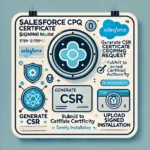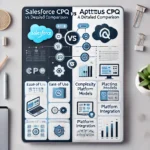Salesforce Survey Object Model plays a pivotal role in gathering valuable insights and driving informed decision-making. In this comprehensive guide, we’ll delve into the intricacies of the Salesforce Survey Object Model, its uses, implementation, and best practices. We’ll explore real-world scenarios, provide a detailed analysis of its features, and offer insights into leveraging this powerful tool effectively. Additionally, we’ll include external links and FAQs to further enhance your understanding of the Salesforce Survey Object Model.
Table of Contents
ToggleUnderstanding Salesforce Survey Object Model
The Salesforce Survey Object Model is a structured framework within the Salesforce platform designed to facilitate the creation, distribution, and analysis of surveys. It consists of various standard and custom objects, fields, and relationships that enable organizations to collect feedback from customers, employees, or partners seamlessly.
Key Components of the Survey Object Model
- Survey Object: Represents the overarching survey entity, containing metadata such as survey name, description, and status.
- Question Object: Defines individual questions within a survey, including question type, options, and validation criteria.
- Response Object: Captures respondent feedback, associating each response with the corresponding survey and question.
- Survey Invitation Object: Facilitates the distribution of surveys to respondents via various channels such as email or community portals.
- Analytics and Reporting: Utilizes standard Salesforce reporting features to analyze survey data, track response rates, and derive actionable insights.
Uses and Benefits of Salesforce Survey Object Model
- Customer Feedback Management: Gather valuable insights to understand customer needs, preferences, and satisfaction levels.
- Employee Engagement Surveys: Measure employee satisfaction, morale, and organizational culture to enhance workforce productivity.
- Product Feedback Collection: Solicit feedback from users to inform product development, feature enhancements, and roadmap decisions.
- Event Feedback Surveys: Collect attendee feedback to evaluate event success, identify areas for improvement, and enhance future event planning.
Implementation Best Practices
- Designing Effective Surveys: Craft clear, concise, and relevant survey questions to maximize response rates and gather actionable insights.
- Personalized Survey Invitations: Tailor survey invitations to recipients’ preferences, demographics, and past interactions for higher engagement.
- Automated Workflows: Implement automation rules to trigger survey distribution, follow-up actions, and response handling processes.
- Integration with CRM: Integrate survey data with Salesforce CRM to centralize customer feedback, align survey responses with customer records, and facilitate data-driven decision-making.
Real-World Scenarios
- Scenario 1: Customer Satisfaction Survey
- A retail organization utilizes the Salesforce Survey Object Model to conduct post-purchase satisfaction surveys, gathering feedback on product quality, delivery experience, and customer service interactions.
- Scenario 2: Employee Engagement Survey
- A multinational corporation leverages the Survey Object Model to administer annual employee engagement surveys, measuring employee satisfaction, identifying areas of improvement, and fostering a positive work environment.
External Links and FAQs
External Links:
- Salesforce Survey Object Model Documentation: Access the official Salesforce documentation to learn more about the Survey Object Model’s architecture, features, and implementation guidelines.
- Salesforce Trailhead Module: Creating Surveys with the Survey Object Model: Take a guided learning journey on Trailhead to understand the basics of creating surveys using the Survey Object Model.
FAQs:
Q: Can the Survey Object Model be customized to suit specific survey requirements?
A: Yes, the Survey Object Model allows for customization of survey objects, fields, and relationships to accommodate unique survey designs and use cases.
Q: How can survey data be analyzed and reported within Salesforce?
A: Salesforce provides standard reporting features to analyze survey data, create dashboards, and track key metrics such as response rates and satisfaction scores.
Q: Can the Survey Object Model be integrated with third-party survey tools?
A: While the Survey Object Model is native to Salesforce, integration with third-party survey tools is possible through APIs or middleware solutions for specific requirements.
Q: Is it possible to anonymize survey responses in the Survey Object Model?
A: Yes, organizations can configure survey settings to anonymize responses, ensuring respondent privacy and compliance with data protection regulations like GDPR.
Q: What are the limitations of the Survey Object Model in terms of survey complexity and scalability?
A: While the Survey Object Model offers robust capabilities for most survey scenarios, complex survey designs or massive-scale survey initiatives may require additional customization or considerations for optimal performance.
Q: How does the Survey Object Model handle multilingual surveys and diverse respondent demographics?
A: Salesforce supports multilingual capabilities, allowing organizations to create surveys in multiple languages and segment respondent demographics for targeted survey distribution and analysis.
Q: Can survey responses be exported or integrated with external systems for further analysis or action?
A: Yes, survey responses can be exported in various formats or integrated with external systems through Salesforce APIs or middleware solutions for deeper analysis, reporting, or automated actions.
Conclusion
The Salesforce Survey Object Model empowers organizations to gather, analyze, and act upon feedback effectively, driving continuous improvement and enhancing customer experiences. By understanding its components, uses, and implementation best practices, businesses can leverage this powerful tool to gain valuable insights, foster customer loyalty, and achieve organizational success.


